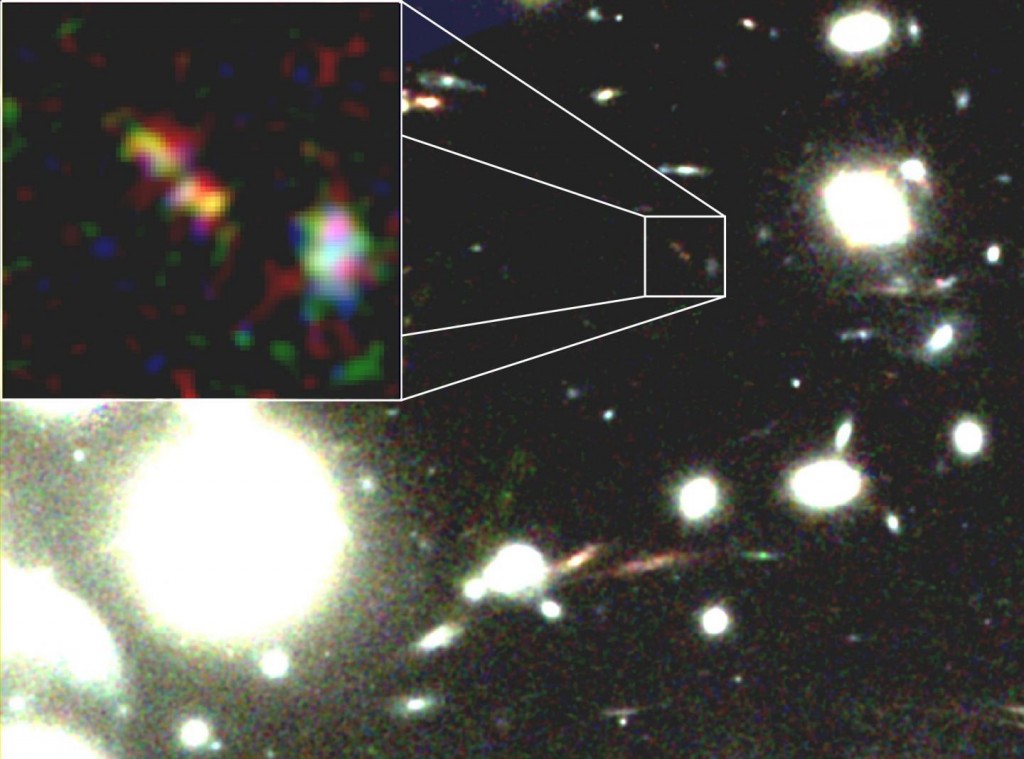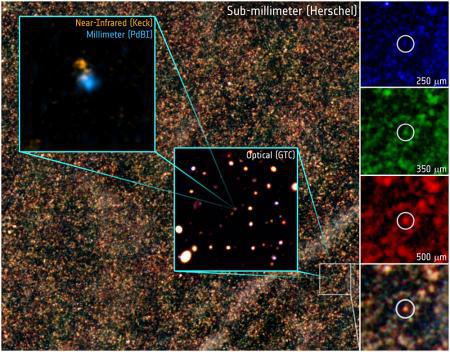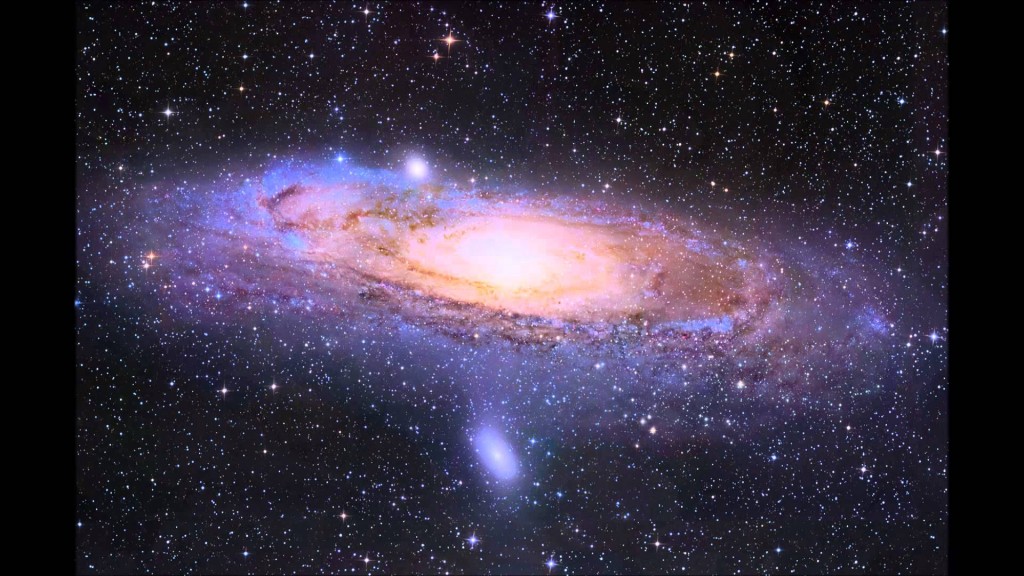Astronomers have discovered a strange and ancient galaxy so far away that it is considered to still retain its pre-galactic features when the universe was a-forming. Known as Galaxy A1689-zD1, this distant galaxy is filled with dust contains a family of stars.
Most older galaxies are known to contain carbon, iron, silicon, oxygen, magnesium, cosmic dust, and other elements, but new or infant galaxies are not known to have many of these materials. These elements are always etched into the cores of stars previous to being circulated out to space, from where the atoms are seeded for the generation of a new set of stars.
Known as Abell 1689 and sitting between the Earth and the ancient galaxy, a cluster of galaxies have formed a gravitational lens which acts like a telescope to magnify the image in nine times, just as a powerful binoculars would do.
Using the Very Large Telescope in Chile, scientists were able to image the galaxy and reveal the immense amount of cosmic dust present within its family of stars. Since it takes time for light from a distant object to reach Earth, scientists see the distant Galaxy A1689-zD1 just as it was when the universe was about 5% of its current age – about 700 million years after the big bang.
“Although the exact origin of galactic dust remains obscure, our findings indicate that its production occurs very rapidly, within only 500 million years of the beginning of star formation in the Universe — a very short cosmological time frame, given that most stars live for billions of years,” said Darach Watson from the University of Copenhagen.
According to astronomers, the immense amount of dust in the ancient galaxy could be the result of a constant formation of stars since 560 million years after the big bang, or due to a star burst or extreme period of stellar formation which should be followed by a decline of stellar births.
“This amazingly dusty galaxy seems to have been in a rush to make its first generations of stars. In the future, ALMA will be able to help us to find more galaxies like this, and learn just what makes them so keen to grow up,” said Kirsten Knudsen, of Chalmers University of Technology in Sweden.
Wavelengths of electromagnetic radiation are stretched by the universe to lower frequencies as light from the galaxy travels toward Earth.
The Atacama Large Millimeter Array (Alma) and Hubble Space Telescope had imaged the dusty and distant galaxy before this time, but details of its content or composition were not so clear and revealed to astronomers.



